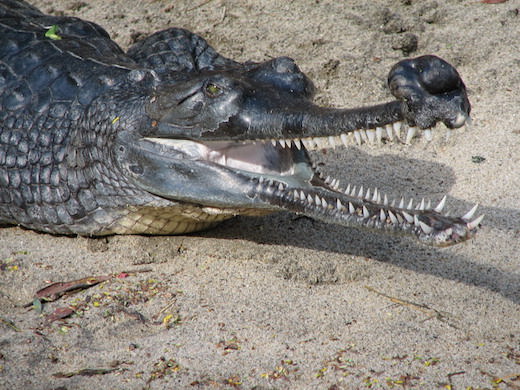Gharial

Critically endangered
Gharials are large crocodiles that are native to the subcontinent of India. The gharial is actually one of the naturally largest living crocodiles in the world, as they can grow up to 20 and a half feet. They’re characterised with long thin snouts, and mouths which house over 110 razor sharp teeth. Gharials get their names because of the unique shape of their snouts. At the very end of their snouts, they have a distinctive shape which resembles a special pot used in the Indian subcontinents, known as a ‘Ghara’. There are three separate species of croc native to india, The gharial being the first, the saltwater crocodile being the second, and the mugger crocodile being the third. As mentioned, these crocs are also known as fish eating crocodiles, so as you may expect, their diets are made up mostly of fish. Their mouths make them well equipped for fishing in water, but on land things are very different. Their legs are very weak off long and would struggle to hold up their own bodyweight. To move on land, they have to push their bodies forward in a “belly slide” type movement.
Population Distribution
Native to India, the population of this endangered species stands at roughly 235. Their numbers have drastically reduced over the last 70 years or so, and experts predict that if things currently continue on this trend, Gharial crocs may soon become extinct forever. They’re most at home in river systems in India and Nepal that are fast flowing with very high sand banks, which they use for building nests and for basking. They were once thriving in areas such as Pakistan, Burma, Bhutan, and Bangladesh, but now only live in select areas and see their numbers decline each year, despite conservation attempts by the Indian government.
Threats
There are a number of threats to Gharial crocodiles, though the main ones have come in the form of habitat destruction at the hands of human beings. Farming and agriculture, mining, pollution, and general disturbances have all contributed towards the radical decline in Gharial numbers. Even livestock have contributed towards their decline as livestock such as water buffalo and cattle have destroyed and damaged riverbanks, sandbanks and gharial nests by simply grazing.